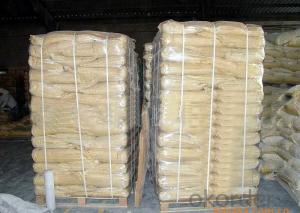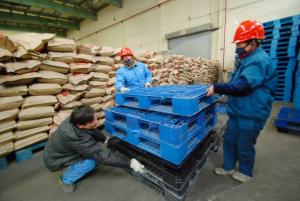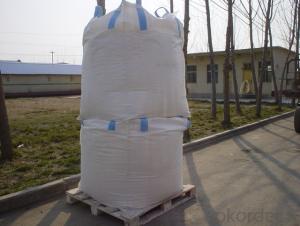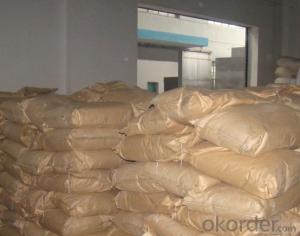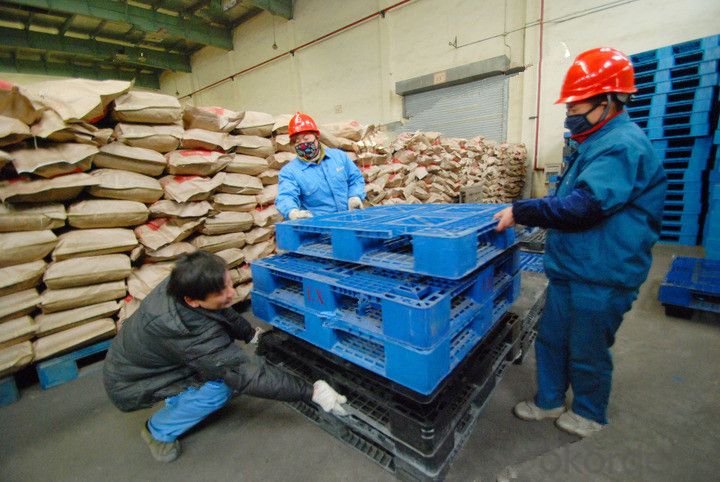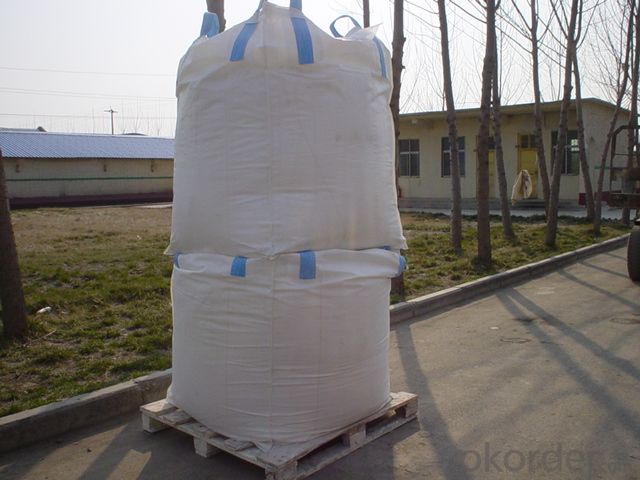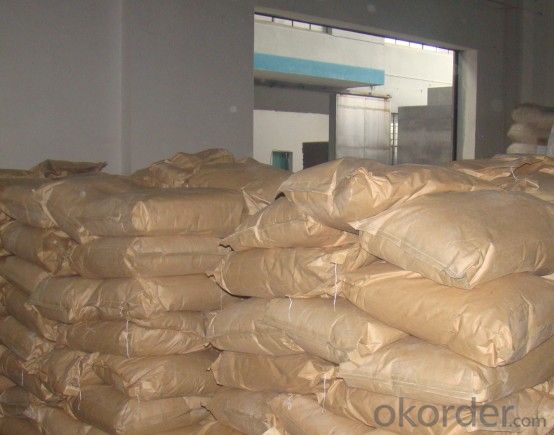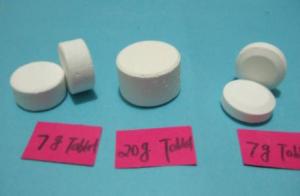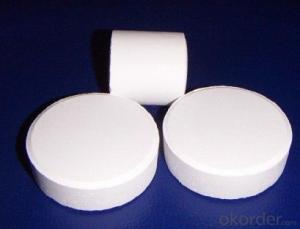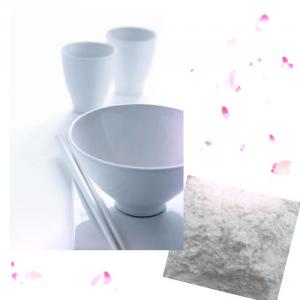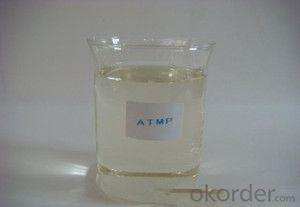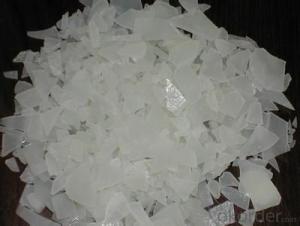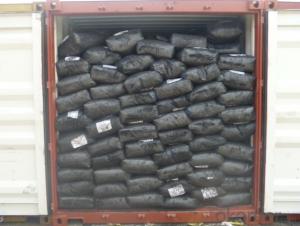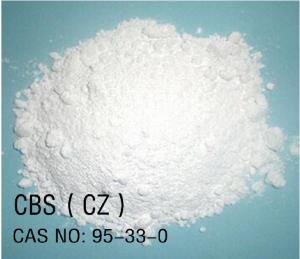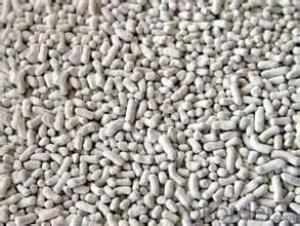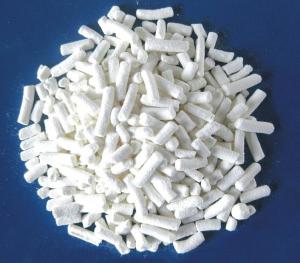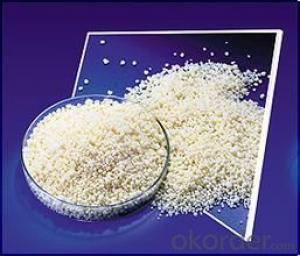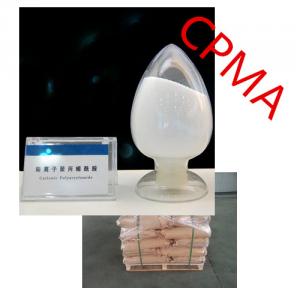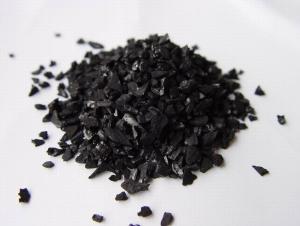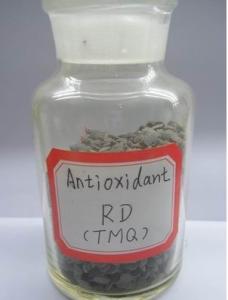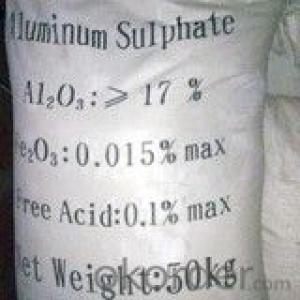RUBBER VULCANIZING ACCELERATOR CBS (CZ)
- Loading Port:
- Tianjin
- Payment Terms:
- TT OR LC
- Min Order Qty:
- 25 m.t.
- Supply Capability:
- 12000 m.t./month
OKorder Service Pledge
OKorder Financial Service
You Might Also Like
RUBBER VULCANIZING ACCELERATOR CBS(CZ)
Chemical Name: N-Cyclohexyl-2-benzothiazole sulfenamide
Molecular Formula: C13H16N2S2
Molecular Weight: 264.4
CAS NO. : 95-33-0
Executive standard:HG/T 2096-2006
Specification:
| Index | ||
High-class products | First-class products | Acceptable end-product | |
Appearance |
| ||
Initial M.P,oC ≥ | 99.0 | 98.0 | 97.0 |
Loss on drying,% ≤ | 0.20 | 0.30 | 0.50 |
Ash, % ≤ | 0.20 | 0.30 | 0.40 |
Residue,% ≤ | 0.00 | 0.05 | 0.10 |
In soluble in Methanol,% ≤ | 0.50 | 0.50 | 0.80 |
Purity,% ≥ | 97.0 | 96.0 | |
Free amine,% ≤ | 0.50 | ||
Properties: Gray, light yellow powder or granules with a little odor, no poison. The density is 1.31-1.34. And melting point 90-108 oC .Soluble benzene, methylene chloride, carbon tetrachloride, ethyl acetate, acetone, ethanol-soluble and petrol do not dissolve in water.
Application: to promote common aftereffect on sexual one. Furnace applicable to the use of black plastic material, both anti-burning performance and excellent short curing time two major advantages. Enable for natural rubber, recycled rubber, vinyl synthetic rubber, especially for the SBR. May be used alone, but also with promoting agent D, DT, TT, TS and others use. Because of a bitter, it can not be used for food-related products. Photochromic minor, do not emit cream vulcanizate excellent anti-aging properties. Used tires, shoes, hose and belt, cable, general industrial products.
Packaging: 25kg plastic woven bag, paper with plastic film bag, Kraft paper bag or jumbo bag.
Storage: The product should be stored in the dry and cooling place with good ventilation, avoiding exposure of the packaged product to direct sunlight. The validity is 1 year.
Note: The product could be ultra fine powder based on customer accurate requirement.
- Q: A biological catalyst or a chemical reaction facilitator is know as a/an?
- I was always taught that it was something best learned by putting forth a bit of effort, reading a bit and embedding the info in your brain so you will remember it always. Just me I guess.
- Q: What are the chemical reaction conditions in organic chemistry are catalyst and heating, please elaborate
- This really does not have omnipotent law, their own more than one point, you can classify to remember, when I was in high school is in accordance with the notes, such as poly, polycondensation and the like. In general, the double triple bond addition, plus halogen is not the conditions, plus HCl, HBr and the like to heat; dehydration reaction generally concentrated H2SO4 heating, dehydration condensation is also; there are some special, such as ethylene added to ethanol Special temperature requirements, it seems that 120 degrees, there are other; other addition poly, polycondensation some need catalyst. The The In short, the conditions are many, in general, you do not go to the high school to do more questions after the feeling, encounter problems do not panic general experience can come out according to experience, this also depends on the usual accumulation, if the equation conditions Wrong to deduct points, it is not worthwhile. There are some questions when the examination will give you some information, whether you know do not know should see clearly, although some of the reaction but the subject to the conditions are not the same, when you do according to the title to write conditions, this will not wrong. In addition, thank you for your help, I do not seem to know you
- Q: What is a catalyst in a chemical reaction?
- Hi Ganah! A catalyst is a substance that increases the rate of a chemical reaction without itself being used up in the reaction. They lower the activation energy for a reaction and also speed up the rate of the reaction (both in reverse and forward reactions). Let's look at a generic chemical reaction: A + B---C + D C + D---B + E Here, the catalyst is substance B because it is part of the chemical reaction but then it is not used up in the net reaction. See how it seems to be used up in the first step, but by the second step, the catalyst is made once again. The net reaction is A + B--->B + E and you can see how it is not consumed in the reaction. There are also 3 types of catalysts. Heterogeneous catalysts are catalysts that are in different phases than the reactants. An example would be like a reaction between two solids but a liquid is added to speed up the reaction. The liquid is in a different state of matter than the solids but it can still function as a heterogeneous catalyst. Homogeneous catalysts are catalysts that are in the same states of matter as the reactants. An example would then be ethyl acetate reacting with water to form acetic acid and ethanol with an acidic catalyst. They would all be liquids. Lastly, there are enzyme catalysts. These are proteins in your body that speed up biological reactions by reacting with substrates. I hope this helped and good luck with chem!
- Q: The role and significance of chemical catalysts
- To speed up or slow down the chemical reaction is to make the chemical reaction more direct, simple and straightforward to adopt
- Q: Will the chemical catalyst not reduce that?
- Why is it done? Although the catalyst does not react chemically, the catalyst itself is deteriorated and is not always used
- Q: Is the catalyst in the chemical reaction better?
- If the concentration of the liquid is too low, then the catalyst is also ineffective
- Q: What is the quality of the catalyst in the chemical reaction, for example, 34.3 g before the hydrogen peroxide reaction, 32.7 g after the reaction, and how much is the catalyst mass?
- You can not calculate this question, the quality of the catalyst before and after the same reaction, how much reaction before the reaction on how much
- Q: What makes an enzyme a catalyst?
- A catalyst is a substance that speeds up a chemical reaction, by lowering the activation energy, and which is not consumed or permanently altered in the process (such that after it has catalyzed the reaction once, it can catalyze the reaction again, and again -- multiple turnover). Catalysts can be as simple as a monatomic ion; they can also be inorganic compounds, non-biological organic molecules, or biological molecules. Biological catalysts are enzymes. Enzymes meet all of the criteria for being a catalyst (speed up chemical reactions, by reducing the activation energy, and are not permanently altered).
- Q: What are the methods of catalyst characterization?
- Chemical means, according to the different detection methods, methods are different, but is to explain the chemical properties, chemical structure characteristics.
- Q: Why would the Eact decrease if a catalyst is added?
- A catalyst by its very nature increases the rate of reaction by binding to a reactant, hence changing its shape and reactivity with other reactants. However, the catalyst is neither consumed nor will it change the chemical shape of the products.
Send your message to us
RUBBER VULCANIZING ACCELERATOR CBS (CZ)
- Loading Port:
- Tianjin
- Payment Terms:
- TT OR LC
- Min Order Qty:
- 25 m.t.
- Supply Capability:
- 12000 m.t./month
OKorder Service Pledge
OKorder Financial Service
Similar products
Hot products
Hot Searches


